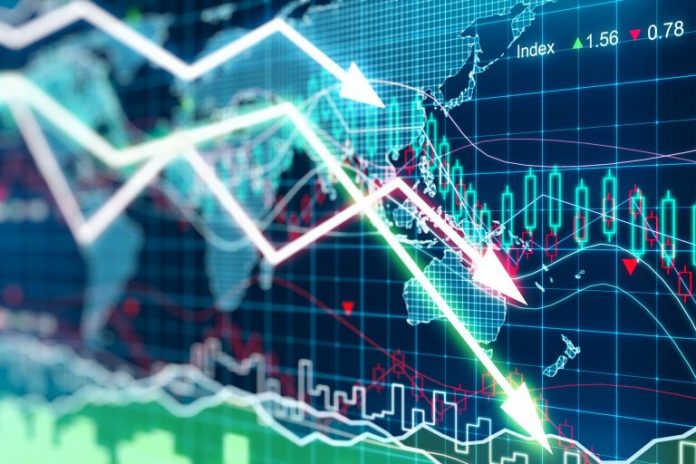This article is written by Shashwati Satya.
Introduction
Indian Markets before the pandemic
What is GDP?
In simple language,
Gross domestic product consists of the total of the value of the goods and services produced in the domestic geographic area of a country i.e it mainly focuses on:
- The Investment Made,
- The Consumption Of The Goods And Services,
- The Expenditure Of The Government I.E. The Public Administration Services,
And
- The Foreign Exchange.
- The calculation of the GROSS DOMESTIC PRODUCT i.e. GDP is done by observing and calculating the value of the goods and services produced and consumed and the investments made and the foreign exchange done in each quarter and then the total growth rate is calculated at the end of the each fiscal year. It means that each fiscal year is divided into four quarters. for e.g. from April to June,2020 forms the first quarter, then July to September,2020 forms the second quarter, October to December,2020 forms the 3rd quarter and January to March, 2021 forms the fourth quarter of the fiscal year 2020-2021.
The Indian Economy was facing turbulent times even before the COVID-19 had hit India as the GDP growth had slowed down 2.6% i.e. the economy had grown only by 3.1% in January to March quarter of the fiscalyear2019-2020 as compared to the growth rate of 5.7% a year ago at this exact time, but the growth rate was of the slowest pace than what it had been in the last eight years.
Fall in the tax revenues and the significant depreciation in the industrial outputs had turned out to be the indicators of an economy which had started to wither and would be witnessing significant plunge in the upcoming days as even the demand for the power had begun to see a massive reduction.
The de-acceleration of GDP had begun for India in the 3rd Quarter of the Fiscal Year, 2016-2017 when the Indian Banknote Demonetisation was imposed overnight on the country which consists of more of the middle class people who get highly affected by even the tiniest flicker of fluctuation in the market. It saw hundreds of politicians and businessmen burning vast amounts of money or donating them as a part of them trying to avoid the inquisition by the income tax department or the government. It also saw many of the old people falling from exertion in the middle of the beeline that was formed outside the ATMs and various weddings being postponed due to the guileful dowry tradition in our country as the money that was paid earlier had lost its value overnight. Less money meant higher price of the goods and services and the already economically crippled people had to face the inflation too. These are just few of the examples. A country recovering from this blow was hit once again with the GST policy which affected the Industries of the country once again.
We as a country, have never been in the negative side of the economy and therefore have experienced less recession than what we’ve had to face in the first quarter APRIL- JUNE of this fiscal year 2020-2021 as we saw the GDP take a huge plunge and plummet into the negative side up till -23.8%. This had happened last 40 years ago before the Industrial reform in India back in the fiscal year of 1979 to 1980 where the overall growth rate was -5.2%.
The Economy can be divided into three parts:
- AGRICULTURE
- MANUFACTURE/ INDUSTRY
- PUBLIC ADMINISTRATION SERVICES
And AGRICULTURE at this point of time proved to be the only saving grace and that silver thread which is upholding the GDP in India thanks to the timely rain this year.
Just like GDP, GVA i.e. Gross Value Added focuses on the Supply Chain which is linked with the Manufacture and Industry and as stated earlier that significant depreciation in the industrial outputs have and the demand for power has lowered too and has shown a plummet by -22.8%. And thus, an increase and inflation can be seen prominently in the Indian Markets for the common man.
The Public Administration services have taken a hit too as the collection in the tax revenues have slowed down and thus have fallen.
2019-2020 fiscal year which ended on 31st March, 2020, showed 5.2 growth rate of GDP in quarter 1 and fell down to 4.4% in quarter 2 and the moved in the downward direction again to 4.1% in the quarter 3 and then showed a slower GDP rate of 3.1% in the final quarter this year. The data of this year’s quarter 1 i.e. from APRIL-JUNE,2020 showed -23.8%.
This means that as compared to the first quarter of the fiscal year of 2019-2020, the value of the goods and services produced in the first quarter of the fiscal year of 2020-2021 is 23.9% lesser.
The data for the first quarter of the fiscal year 2020-2021i.e. for the Q1FY21 are as follows:
- The Industry sector has faced a contraction of -38.1%.
- The Public Administration Services have faced a contraction of –20.6%.
- The Manufacturing and Construction sectors have faced a contraction of –39.3%.
- The Agriculture sector that has been the saving grace for Indi in the first quarter is the only sector that hasn’t plummeted into the negative side and has seen a growth rate of 3.4%. It’s slow as compared to the growth rate of 5.9% in the Q4FY20, but it’s still in the positive side as of now.
- The Trade and Hotels business which had shown a growth rate of 3.1% in the Q1FY20 and a slightly depreciated growth rate of 2.6% in the Q4FY20, has seen a downfall in the rate as it is -47%, thus making it the worst hit sector probably.
Go local and international monetary fund’s (IMF’s) take on the Indian economy as of the fiscal year 2020-2021
The lockdown that had happened on March 25th, 2020 had led to the stagnation of the various sectors in the various industrial fields, but as the Un-lockdown procedures have started, the data as of now has begun to look up as the government is seen working hard towards up-liftment of the GDP by promoting the production and consumption of more locally produced goods and services which would help not only in increasing the employment in the country and with the support from the government subsidiaries the small scale industries will develop too and will thus help the Country in exporting more of the domestically manufactured goods and services and the focus will lessen on the import of the goods from the foreign countries too. The inflation will decrease and the market and the economy will become balanced once again.
The International Monetary Fund i.e. the IMF has said that :
“The IMF on June 24 projected a sharp contraction of 4.5% for the Indian economy in 2020, a ‘historic low’, citing the unprecedented Corona-virus pandemic that has nearly stalled all economic activities, but said the country is expected to bounceback in 2021 with a robust 6% growth rate.”
Thus, one can say that maybe the grim picture and situation of the GDP or the GVA of the first quarter of the fiscal year of 2020-2021 won’t last long and hopefully, the country will bounce back to the positive data side, by the end when the final growth rate will be calculated.
“The Indian economy will bounce back in 2021-’22 with a growth rate of around 6%, but this is lower than the 7.4% predicted in April.”
As put together by the International Monetary Fund or the IMF.
LawSikho has created a telegram group for exchanging legal knowledge, referrals and various opportunities. You can click on this link and join:












